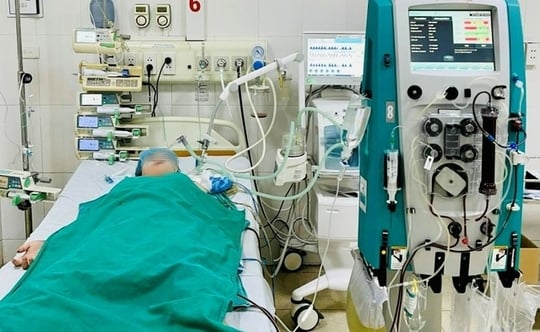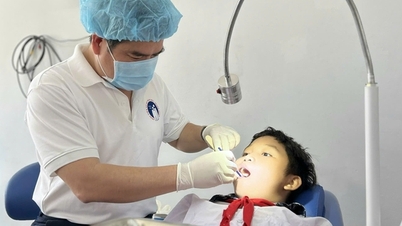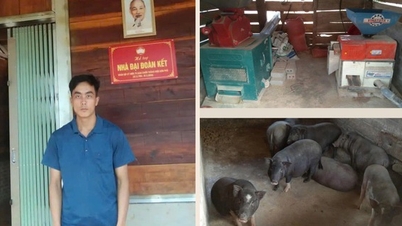On September 19, Thanh Hoa Children's Hospital informed that a 15-year-old female patient, residing in Quang Xuong district, with Whitmore disease died after more than 2 weeks of treatment.
The patient’s family said that from August 22 to August 30, the patient had symptoms of sore throat, cough, high fever, drank a lot of water, and lost 7 kg in 10 days. The patient bought medicine to treat himself at home but did not get better.

Female student with Whitmore disease died after a period of intensive treatment
On September 11, the patient was taken to a local private clinic for examination and prescription medication, but his condition did not improve. His condition worsened with symptoms of fatigue, high fever, and poor appetite.
The patient was then taken to the Central Hospital 71 (Thanh Hoa) for examination and treatment due to intermittent fever, temperature fluctuating between 39 and 40 degrees Celsius, and fatigue. Here, the patient underwent basic tests, high blood sugar, incontinence, and 2 convulsions, each lasting 5-10 minutes. After 2 days of treatment, the patient was transferred to Thanh Hoa Children's Hospital in a state of respiratory failure, rapid pulse, low blood pressure, cyanosis, coma, and critical condition.
Test results showed that the female student was infected with the bacteria Brukholderia pseudomallei, which causes Whitmore's disease. In addition to the bacteria, the female student also had diabetes and obesity. Despite treatment, intensive care, mechanical ventilation, and dialysis, her health did not improve. The patient's condition worsened and she died on the afternoon of September 17.
Whitmore (also known as Melioidosis) is an infection in humans and animals caused by the bacterium Burkholderia Pseudomallei. B. pseudomallei bacteria live in soil and contaminated water and enter the body mainly through open wounds on the skin.
Whitmore does not cause an epidemic, but the disease often progresses severely, with a high mortality rate, especially in high-risk subjects. Contaminated environmental sanitation conditions will create favorable conditions for bacteria to grow and develop.
The disease has very diverse clinical manifestations, is difficult to diagnose and can be fatal if not detected and treated promptly, especially in people with underlying diseases such as diabetes, liver, kidney, chronic lung disease, immunodeficiency...
Source



































































![[Infographic] Vietnam's stock market exceeds 11 million trading accounts](https://vphoto.vietnam.vn/thumb/402x226/vietnam/resource/IMAGE/2025/11/09/1762677474332_chungkhoanhomnay0-17599399693831269195438.jpeg)





















![Dong Nai OCOP transition: [Part 2] Opening new distribution channel](https://vphoto.vietnam.vn/thumb/402x226/vietnam/resource/IMAGE/2025/11/09/1762655780766_4613-anh-1_20240803100041-nongnghiep-154608.jpeg)













Comment (0)